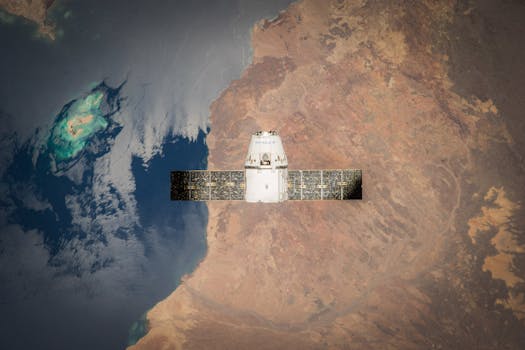
The Rise of Mega-Constellations: Latest Updates in Satellite Telecommunications
The Rise of Mega-Constellations: Latest Updates in Satellite Telecommunications. The field of satellite telecommunications is undergoing a significant transformation with the emergence of mega-constellations. These large networks of satellites in low Earth orbit (LEO) are being developed by companies like SpaceX, OneWeb, and Amazon to provide global internet coverage and a range of other services. In this article, we will explore the latest updates in satellite telecommunications and the impact of mega-constellations on the industry.
Mega-constellations are designed to provide high-speed, low-latency internet connectivity to remote and underserved areas around the world. They have the potential to bridge the digital divide and provide new opportunities for economic development, education, and healthcare. The development of mega-constellations is also driving innovation in space technology, with advancements in areas like satellite design, launch systems, and ground infrastructure.
Companies Leading the Charge
Several companies are leading the charge in the development of mega-constellations. SpaceX, founded by Elon Musk, is one of the most prominent players in the field. Its Starlink constellation aims to provide global internet coverage with a network of thousands of satellites in LEO. OneWeb, another major player, is developing a constellation of 650 satellites to provide high-speed internet connectivity to underserved areas. Amazon’s Kuiper Systems is also working on a mega-constellation, with plans to launch over 3,000 satellites in the coming years.
These companies are investing heavily in the development of mega-constellations, with billions of dollars being spent on research and development, launch systems, and ground infrastructure. The investment is expected to pay off, with the global satellite telecommunications market predicted to reach $10 billion by 2025.
Benefits and Challenges
The benefits of mega-constellations are numerous. They have the potential to provide high-speed internet connectivity to remote and underserved areas, bridging the digital divide and providing new opportunities for economic development, education, and healthcare. Mega-constellations can also provide backup connectivity during natural disasters and other emergencies, ensuring that critical communication systems remain online.
However, there are also challenges associated with the development of mega-constellations. One of the main concerns is the risk of space debris, with thousands of satellites being launched into orbit. There are also concerns about the impact of mega-constellations on the environment, with the potential for interference with other satellite systems and the creation of a new generation of space junk.
Regulatory Framework
The development of mega-constellations is also raising regulatory concerns. There is a need for a clear regulatory framework to govern the development and operation of mega-constellations, ensuring that they are safe, secure, and do not interfere with other satellite systems. The International Telecommunication Union (ITU) is working to develop a regulatory framework for mega-constellations, with the aim of ensuring that they are developed and operated in a responsible and sustainable manner.
In conclusion, the rise of mega-constellations is revolutionizing the field of satellite telecommunications, with companies like SpaceX and OneWeb leading the charge. While there are challenges associated with the development of mega-constellations, the benefits are numerous, and they have the potential to provide high-speed internet connectivity to remote and underserved areas around the world.



